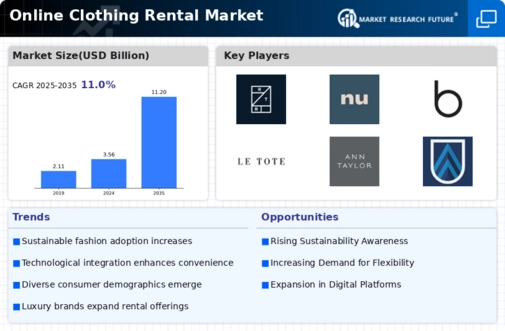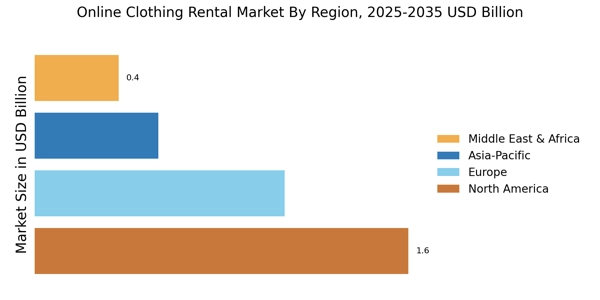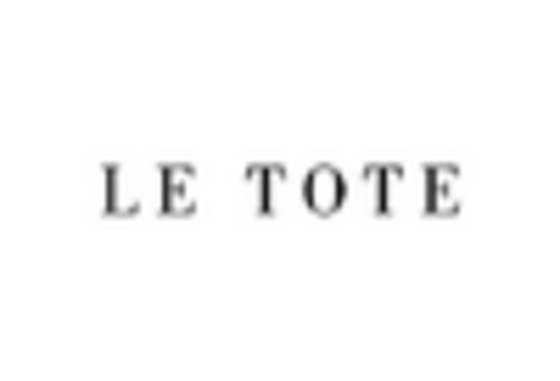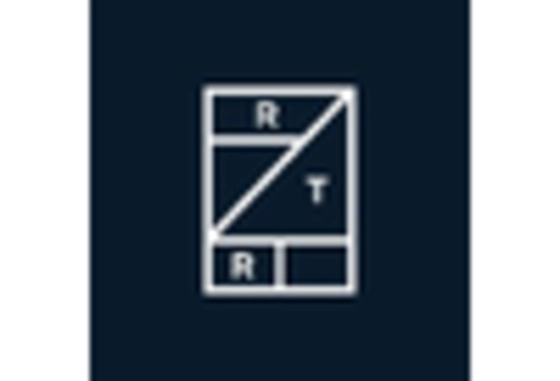The Online Clothing Rental Market is currently characterized by a dynamic competitive landscape, driven by evolving consumer preferences towards sustainability and convenience. Key players such as Rent the Runway (US), Le Tote (US), and HURR Collective (GB) are at the forefront, each adopting distinct strategies to enhance their market positioning. Rent the Runway (US) continues to innovate its subscription model, focusing on expanding its inventory to include more sustainable brands, thereby appealing to eco-conscious consumers. Meanwhile, Le Tote (US) emphasizes digital transformation, leveraging advanced data analytics to personalize customer experiences and optimize inventory management. HURR Collective (GB) is carving a niche through its community-driven approach, promoting peer-to-peer rentals that foster a sense of shared economy, which resonates well with younger demographics.
The business tactics employed by these companies reflect a broader trend towards localization and supply chain optimization. The market appears moderately fragmented, with numerous players vying for consumer attention. However, the collective influence of major companies is significant, as they set benchmarks for service quality and customer engagement. This competitive structure encourages smaller entrants to innovate rapidly, often leading to unique offerings that challenge established norms.
In August 2025, Rent the Runway (US) announced a partnership with a leading sustainable fashion brand, aiming to introduce a new line of eco-friendly rental options. This strategic move not only enhances their product offering but also aligns with the growing consumer demand for sustainable fashion solutions. By integrating sustainability into their core business model, Rent the Runway (US) positions itself as a leader in the eco-conscious segment of the market.
In September 2025, Le Tote (US) launched an AI-driven feature that personalizes rental recommendations based on user preferences and past rental history. This innovation is likely to enhance customer satisfaction and retention, as it provides a tailored shopping experience that meets individual needs. The integration of AI into their operations signifies a shift towards more sophisticated customer engagement strategies, which could redefine competitive dynamics in the market.
In July 2025, HURR Collective (GB) expanded its platform to include a wider range of luxury items, thereby attracting a more affluent customer base. This strategic expansion not only diversifies their inventory but also positions HURR Collective (GB) as a go-to platform for high-end fashion rentals. By tapping into the luxury segment, HURR Collective (GB) may enhance its brand prestige and appeal to a demographic that values exclusivity and quality.
As of October 2025, the Online Clothing Rental Market is witnessing trends that emphasize digitalization, sustainability, and the integration of advanced technologies such as AI. Strategic alliances among key players are increasingly shaping the competitive landscape, fostering innovation and collaboration. The shift from price-based competition to a focus on technological advancement and supply chain reliability is evident, suggesting that future differentiation will hinge on the ability to innovate and adapt to changing consumer expectations.


















Leave a Comment